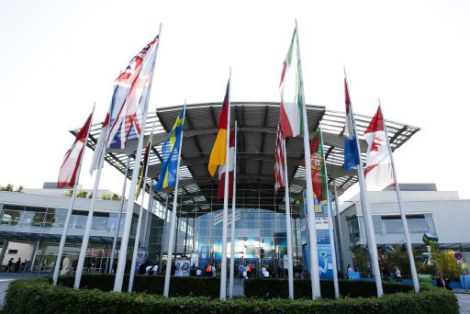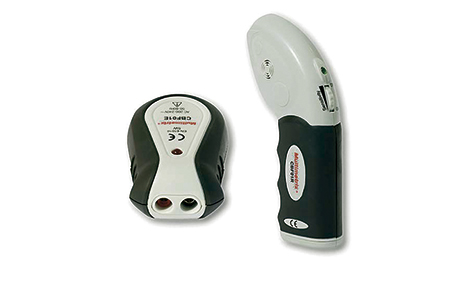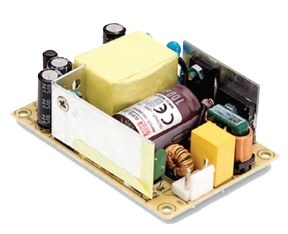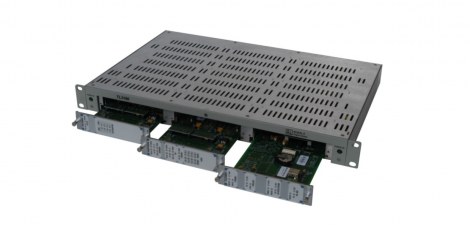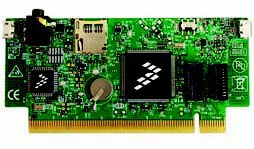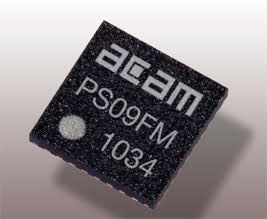A look at the streets or in the showrooms of car dealers demonstrates this: Automobile manufacturers are offering increasingly more variants of the same basic models. As a result, the number of each individual model is smaller. This requires increasingly flexible automation solutions. One key is in the software; the programming of robots and robots lines is being simplified considerably and designed intuitively, so that conversions can be made more easily and faster.
Automated bonding enables refined lightweight construction
Automated bonding in automobile manufacturing is becoming increasingly important for automation specialists. This joining technology is getting further impetus thanks to the demands for saving fuel and electric vehicles. Refined light construction is required for both. Materials are used there that cannot be welded, such as plastic and composites. It is also becoming interesting for material combinations, which cannot be joined using “conventional” welding processes, such as steel and aluminium. This is a completely new field, in which the robot suppliers as well as companies in assembly and handling technology first have to familiarize themselves, is battery production for electric vehicles, because lithium-ion cells were not previously combined into such large unit as for electric drives. Direct voltages between 200 and 400 volts are created, which require new safety mechanisms, including in production.
Battery production, electric mobility in general as well as various lightweight construction topics of the automobile industry will also be explained by speakers at the AUTOMATICA Forum ( in Hall B1 daily). Automotive Day is on 23; then the Forum will dedicate the complete day to the challenges of the automotive industry as one of the traditional core industries for robotics and automation.
AUTOMATICA 2012 has declared one special aspect of lightweight construction, the production reinforced carbon composite materials, to be one of its main topics. A new special exhibition as well as the Innovation Area with exchanges between experts is being held under the title “Automated Composite Production (ACP)”. The offers of the trade fair in this field include the “Automated Composite Production Innovation Area”, where automated fibre-reinforced production solutions in live operation are shown in collaboration with research institutes.
Complete solution for optimum integration of the welding process
The “hot” joining technologies such as welding also remain pivotal challenges in lightweight construction for assembly and handling technology. Different resistance spot welding, arc welding and soldering technologies dominate especially in the production of crossmembers, car bodies including doors and bonnets, shock absorbers and exhaust systems. In addition to requirements for increased economic effectiveness and quality, the process reliability of automated systems and automatic documentation of results play an increasingly important role here ohdresses.com.
Industry IT systems provide comprehensive solutions for this: from rationally EDPsupported work preparation via automated workflows to the networking of individual systems into manageable production units and all the way to automated documentation of workflows and the individually welded product. Coordinating and networking with the hardware and software components involved such as robots, handling systems and IT systems are demanding tasks in this respect. As a result, welding system manufacturers are continually developing and optimising corresponding interfaces.
Optimising quality in RT with in-line inspection
Industrial machine vision is providing pivotal technologies for the continually increasing demands on quality of the automobile industry. For example, modern, highly precise 3D in-line measurement engineering enables fast, process-optimised performance of very different measurement tasks directly in the process on vehicle body shells today. The recorded measurement data can be used directly in production for optimising quality.
Welding seam inspections at automobile manufacturers are also increasingly required to supply the data for completely automated reworking and consequently considerably increase efficiency once more. Instead of only deciding whether “OK” or “not OK”, a seam inspection system has to differentiate defects clearly or transmit the defect position. Surface inspection is becoming increasingly important from an operational viewpoint in this respect. For example, surface defects on cylinder head gaskets can result in breakdowns later. Machine vision provides complex inspection systems for this with special test software, customised lighting and high-resolution line-scanning cameras.


